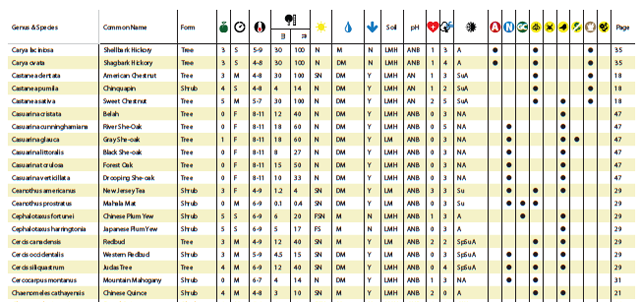Plants for Your Food Forest: 500 Plants for Temperate Food Forests and Permaculture Gardens. [Paperback]
An important new book from PFAF. It focuses on the attributes of plants suitable for food forests, what each can contribute to a food forest ecosystem, including carbon sequestration, and the kinds of foods they yield. The book suggests that community and small-scale food forests can provide a real alternative to intensive industrialised agriculture, and help to combat the many inter-related environmental crises that threaten the very future of life on Earth.
The featured plants are arranged in sections corresponding to Forest Layer: Shrubs, Groundcover Shrubs, Trees, Herbaceous Plants, Herbaceous Groundcover Plants, Running Bamboos, Bulbs, Climbers. At the back of each section, there are additional edible and support plants. Additional edible plants have either already been featured in our other books or have a slightly lower edible rating than the main plant choices. Support plants are plants for a food forest with other non-edible benefits that help the ecosystem to thrive. They might have other design benefits, act as nitrogen fixers or dynamic accumulators, repel or distract pest species, or attract a range of beneficial wildlife. Each section ends with a quick-reference table showing the edible plant parts and their use. At the back of the book is a quick-reference plant matrix featuring all 500 plants included in the book with additional information on the growth rate, prefered soil type and drainage.
Detailed Plant Pages
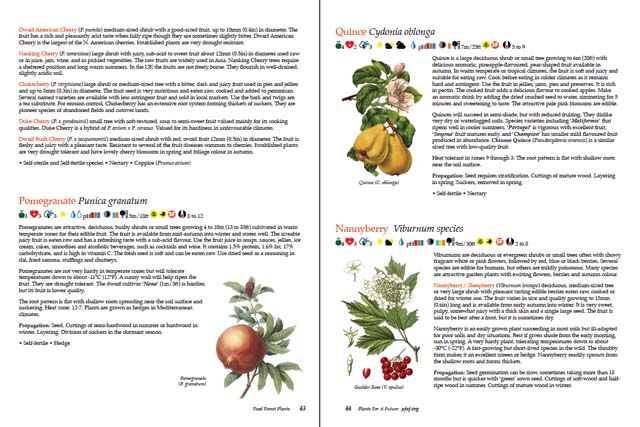
Quick reference Icons
New Plant Icons are included to help you choose plants.

Additional Content
Other edible plants either already featured in our other books or with a slightly lower edible rating than the main plant choices are included for completeness.
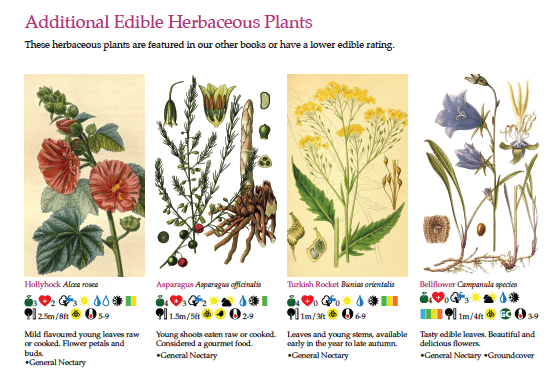
Support Plants
Each section has additional plants that have been chosen for their non-edible benefits that help the ecosystem to thrive. They might have other design benefits, act as nitrogen fixers or dynamic accumulators, repel or distract pest species, or attract a range of beneficial wildlife.
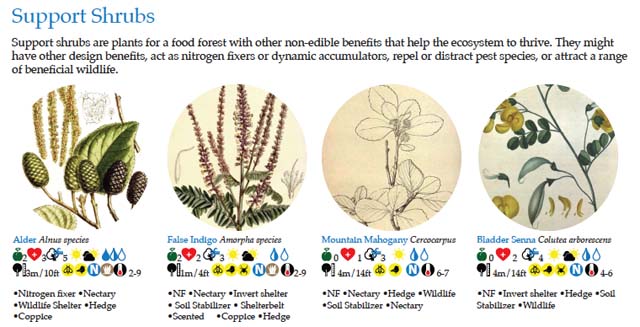
Edible Summary Tables
At the end of each section are a summary of the edible parts and use of each plant. The plants are listed by scientific name, with the page number for reference in brackets.
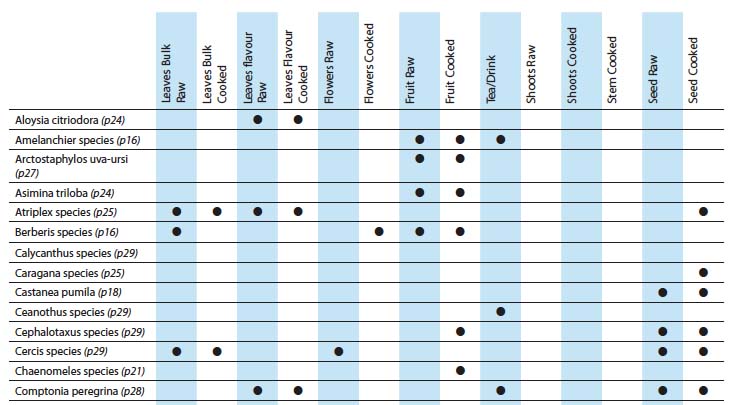
The book finishes with a Quick reference Matrix for all 500 plants mentioned to help when making choices based on your requirements.
